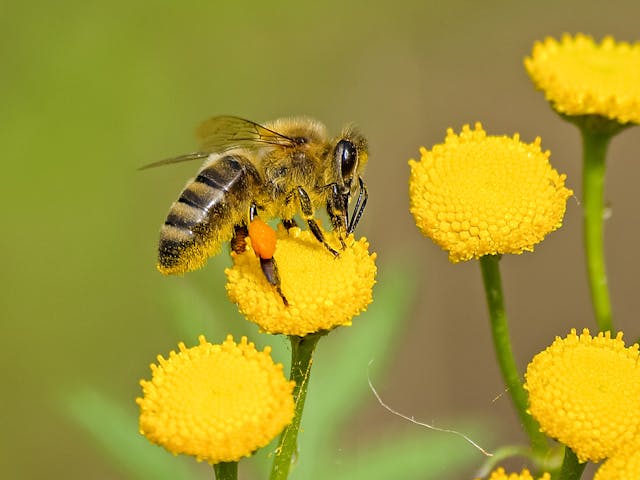
Allergies, an increasingly prevalent health concern, result from the immune system’s abnormal response to typically harmless substances known as allergens. These reactions manifest in various forms, with different types of allergies such as respiratory allergies affecting the airways, food allergies triggering responses to specific proteins, skin allergies causing conditions like eczema, and insect sting allergies leading to heightened immune reactions to venom. The intricate interplay between the immune system and diverse allergens underscores the complexity of allergic responses, ranging from mild discomfort to severe, life-threatening reactions.
This exploration aims to provide an overview of the four main types of allergies respiratory, food, skin, and insect sting allergies highlighting the need for understanding, awareness, and effective management in navigating the challenges posed by allergic conditions.
What is Allergy?
An allergy is an abnormal immune response to typically harmless substances called allergens. When individuals with allergies encounter these triggers, their immune system mistakenly identifies them as threats, leading to the release of chemicals that cause symptoms ranging from mild discomfort to severe reactions. Common allergens include pollen, dust mites, pet dander, certain foods, insect venom, and medications. Allergies can affect various systems, such as the respiratory or digestive system. Management often involves avoiding triggers, using medications, and, in severe cases, emergency measures like epinephrine administration.
These are The Different Types of Allergies

- Respiratory Allergies
- Food Allergies
- Skin Allergies
- Insect Sting Allergies
- Medication Allergies
- Latex Allergies
- Mold Allergies
- Pet Allergies
- Eye Allergies
- Nickel Allergy
- Sun Allergy
- Cold Allergy (Cold Urticaria)
- Exercise-Induced Allergies
- Pollen Allergies
- Dust Mite Allergies
Triggers of Different Types of Allergies

-
Respiratory Allergies:
- Pollen
- Dust mites
- Pet dander
- Mold spores
-
Food Allergies:
- Nuts
- Shellfish
- Dairy
- Eggs
- Wheat
- Soy
-
Skin Allergies:
- Latex
- Certain metals (e.g., nickel)
- Certain fabrics
-
Insect Sting Allergies:
- Bee venom
- Wasp venom
- Ant venom
-
Medication Allergies:
- Antibiotics (e.g., penicillin)
- Pain relievers (e.g., aspirin)
-
Latex Allergies:
- Natural latex from rubber products
-
Mold Allergies:
- Mold spores in damp environments
-
Pet Allergies:
- Pet dander
- Saliva
- Urine
-
Eye Allergies:
- Pollen
- Pet dander
- Dust mites
-
Nickel Allergy:
- Contact with nickel-containing items (e.g., jewelry, coins)
-
Sun Allergy:
- Sunlight
- UV radiation
-
Cold Allergy (Cold Urticaria):
- Exposure to cold temperatures
-
Exercise-Induced Allergies:
- Physical activity
-
Pollen Allergies:
- Airborne pollen from trees, grasses, and weeds
-
Dust Mite Allergies:
- Dust mites in household dust
Symptoms of Different Types of Allergies
-
Respiratory Allergies:
- Sneezing
- Runny or stuffy nose
- Itchy or watery eyes
- Coughing
-
Food Allergies:
- Hives or rash
- Swelling
- Abdominal pain
- Nausea or vomiting
- Difficulty breathing
-
Skin Allergies:
- Redness
- Itching
- Rash or hives
- Dry or scaly skin
-
Insect Sting Allergies:
- Localized swelling and redness
- Itching
- Hives
- Difficulty breathing
-
Medication Allergies:
- Rash
- Itching
- Swelling
- Anaphylaxis (in severe cases)
-
Latex Allergies:
- Itching
- Redness
- Hives
- Swelling
-
Mold Allergies:
- Sneezing
- Runny or stuffy nose
- Itchy or watery eyes
- Skin rash
-
Pet Allergies:
- Sneezing
- Runny or stuffy nose
- Itchy or watery eyes
- Skin rash
-
Eye Allergies:
- Redness
- Itching
- Watery eyes
-
Nickel Allergy:
- Redness and rash
- Itching
- Swelling
-
Sun Allergy:
- Redness
- Itching
- Rash
-
Cold Allergy (Cold Urticaria):
- Itching
- Hives
- Swelling upon exposure to cold
-
Exercise-Induced Allergies:
- Hives
- Itching
- Shortness of breath
-
Pollen Allergies:
- Sneezing
- Runny or stuffy nose
- Itchy or watery eyes
-
Dust Mite Allergies:
- Sneezing
- Runny or stuffy nose
- Itchy or watery eyes
- Coughing
Treatment For Different Types of Allergies
-
Respiratory Allergies:
- Antihistamines
- Decongestants
- Nasal corticosteroids
- Allergy shots (immunotherapy)
-
Food Allergies:
- Strict avoidance of allergenic foods
- Epinephrine injection for severe reactions
- Antihistamines for mild symptoms
-
Skin Allergies:
- Topical corticosteroids
- Antihistamines (oral or topical)
- Avoidance of allergens
-
Insect Sting Allergies:
- Epinephrine injection for severe reactions
- Allergy shots (venom immunotherapy)
-
Medication Allergies:
- Discontinuation of the offending medication
- Use of alternative medications
- Epinephrine injection for severe reactions
-
Latex Allergies:
- Avoidance of latex-containing products
- Use of latex-free alternatives
- Medications to manage symptoms
-
Mold Allergies:
- Allergy medications (antihistamines, nasal corticosteroids)
- Dehumidifiers to reduce mold growth
- Mold remediation in the environment
-
Pet Allergies:
- Allergy medications
- Pet-free zones in the home
- Regular cleaning to reduce allergen exposure
-
Eye Allergies:
- Antihistamine eye drops
- Artificial tears
- Allergy medications (oral or nasal)
-
Nickel Allergy:
- Avoidance of nickel-containing items
- Topical corticosteroids for skin reactions
- Oral antihistamines for itching
-
Sun Allergy:
- Sunscreen with high SPF
- Protective clothing
- Antihistamines for itching
-
Cold Allergy (Cold Urticaria):
- Avoidance of cold exposure
- Antihistamines for symptom relief
- Epinephrine for severe reactions
-
Exercise-Induced Allergies:
- Pre-exercise antihistamines
- Gradual warm-up before exercise
- Avoidance of triggers when possible
-
Pollen Allergies:
- Antihistamines
- Nasal corticosteroids
- Allergy shots (immunotherapy)
-
Dust Mite Allergies:
- Allergen-proof bedding
- Regular cleaning and dusting
- Air purifiers
It is Important to Study The Different Types of Allergies
In conclusion, allergies represent an escalating health concern, stemming from the immune system’s abnormal response to typically harmless substances, known as allergens. The intricate interplay between the immune system and diverse triggers underscores the complexity of allergic responses, ranging from mild discomfort to severe, life-threatening reactions. This exploration has provided an overview of four main allergy types—respiratory, food, skin, and insect sting allergies—emphasizing the imperative for understanding, awareness, and effective management. Recognizing the varied triggers and symptoms across different types of allergies, the outlined treatments encompass a spectrum of interventions, ranging from medication to lifestyle modifications, illustrating the multifaceted approach required for mitigating the challenges posed by allergic conditions.



